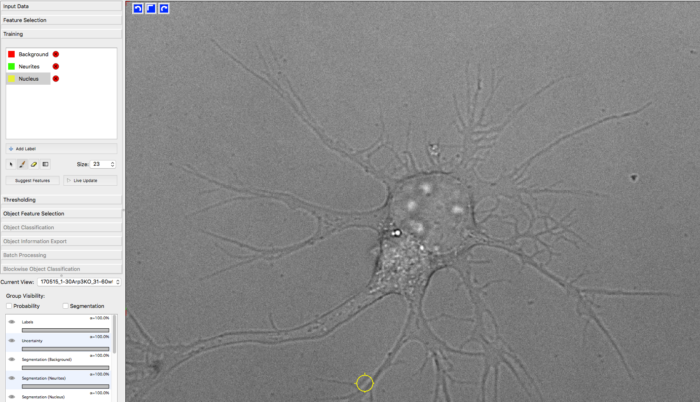
A large number of measurements such as size, shape, intensity, texture, and spot counts can thereafter be made on a per-worm basis using all image channels available, as is common for cell-based assays 14. The model is then used to untangle and identify individual worms( Fig. To address this, we first construct a model of the variability in worm size and shape from a representative set of training worms( Fig. The next step, and the major challenge, is “untangling,” i.e., detecting individual worms among clustered worms and debris. We pre-process to compensate illumination variations, detect well edges, and make the image binary ( Fig. It can measure hundreds of phenotypes related to shape, biomarker intensity, and staining pattern in relation to the anatomy of the animals.Ī typical workflow starts with bright field images( Fig. elegans phenotype scoring from images of adult worms in liquid, we developed an image-analysis toolbox that can detect individual worms regardless of crossing or clustering. Also, image based screening allows for visual confirmation of results, the images form a permanent record that can be re-screened for additional phenotypes, and low-throughput experiments require no more equipment than a microscope and a digital camera. However, image-based screens have several benefits: They allow detection of more complex phenotypes by two-dimensional analysis of shape and signal patterns, and do not require re-suspension of worms in additional liquid prior to analysis, allowing smaller sample volumes and closed culture conditions -an important factor when screening large libraries of small molecules and RNAi clones, and when using pathogenic microbes. For most assays, the density of worms per microplate well causes the worms to touch or cluster, so that automated analysis has been limited to population-averaged measurements 12– 13, hiding population heterogeneity and prohibiting measurements on individual animals.Īn alternative to microscopy is flow systems adapted for worms(e.g., COPAS, Union Biometrica), measuring length, optical density and fluorescence emission at transverse slices along the length of individual worms. However, there is still a strong need to automate the analysis of high-throughput, static images of adult worms in liquid culture, a common screening output. elegans experiments, such as those involving low-throughput, high-resolution, 3-D, or time-lapse images, or images of embryos 7– 11. Much progress has been made in automating the analysis of particular types of C. elegans are widespread 4– 6 and can probe complex processes such as metabolism, infection, and behavior, but so far the analysis of such experiments has largely been manual, subjective, and onerous. Large-scale chemical and RNAi screens using C. elegans is a useful model system for studying biological processes shared with humans 1, high-throughput instrumentation and reagent libraries exist for sample preparation and imaging 2, and deviations from wild-type are often readily apparent because worms are visually transparent and follow a stereotypic developmental pattern 3. Phenotypic assays of intact organisms allow the study of biological pathways and diseases that cannot be reduced to biochemical or cell-based assays.
UNEVEN CONTRAST CELLPROFILER CODE
Cell Profiler source code with WormToolbox
UNEVEN CONTRAST CELLPROFILER HOW TO
How to get started using the WormToolbox. Compensating illumination and graph-based worm cluster untangling. Removing well edges and compensating illumination by a convex-hull approach. Assay 4: Reporter pattern detection by worm straightening and atlas mapping. Assay 3, part 2: Scoring of wells and population heterogeneity. Assay 3, part 1: Fat accumulation scoring based on oil red O staining pattern. Assay 2, part 2: Live/dead scoring of images from a large HTS experiment. Assay 2, part 1: Live/dead scoring based on bright field morphology. Assay 1, part 4: Examples of modes of failure.

Assay 1, part 3: Detection of individual worms in either adult or larval stage L1 or 元. Assay 1, part 2: Detection of adult worms at increasing concentration of progeny. Assay 1, part 1: Detection of individual adult worms, in the presence of clustering, eggs and progeny. Performance of untangling in relation to clusters size, size of training set, and speed. Distribution of cluster sizes and performance of untangling.


 0 kommentar(er)
0 kommentar(er)
